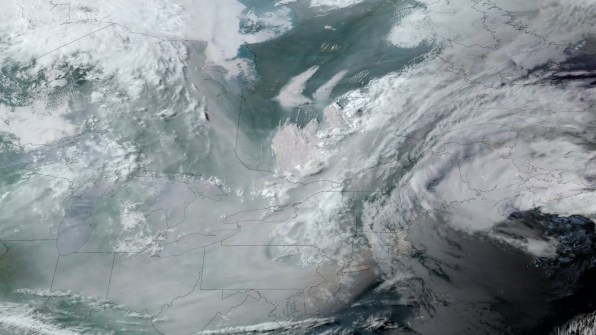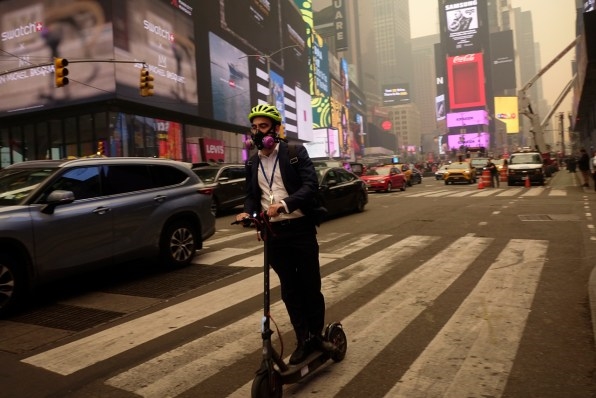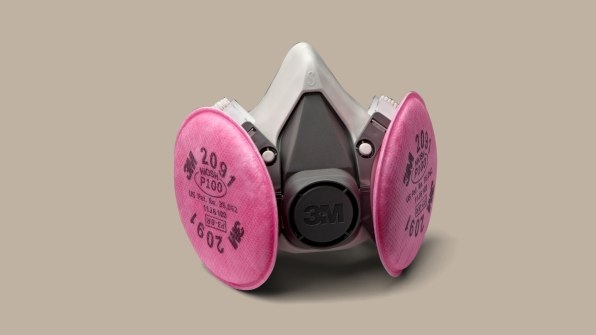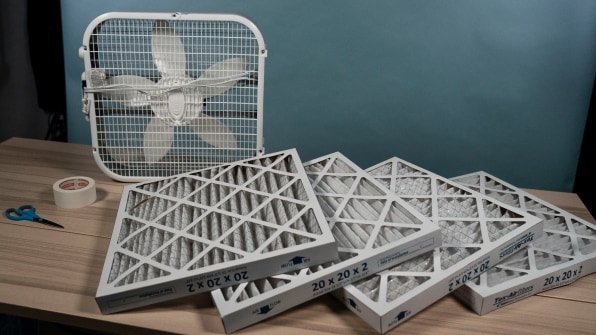Welcome to the Pyrocene Age: As climate change makes wildfires more common, it’s also increasingly likely that you’ll wake up to sooty air, even if you live thousands of miles away from an actual fire. And breathing in high levels of particulate matter—the tiny fragments of soot created by burnt trees and other things that burn along the way, like cars—is unhealthy. Here’s how to protect yourself.
The risk
One of the main pollutants in wildfire smoke is called PM2.5—particles that are 2.5 micrometers wide, or around 30 times smaller than the width of a human hair. When someone breathes in the tiny particles, they can trigger asthma attacks or even heart attacks. The pollution can also raise the risk of respiratory infections. Research is still ongoing about the effects of repeated, long-term exposure, but wildfire smoke has also been linked to diseases like cancer. Children and older adults are particularly vulnerable to the pollution; there’s also evidence of risks for babies born to women exposed to wildfire smoke.

When smoke lingers in the air and travels, chemical reactions can make it more dangerous than it was at the site of the fire by generating free radicals—unstable atoms that can damage cells and tissues in the body. One study found that wildfire smoke samples became four times more toxic a day later. Wildfire smoke can also mix with urban pollution to increase ozone pollution, which can worsen asthma and other lung problems.
Air quality data, either from the government or crowdsourced real-time maps like PurpleAir, shares pollution levels based on the Air Quality Index so you can see when the risk is highest.

When masks can—and can’t—help
An N95 mask can help filter out particles if it fits correctly. “Everything we learned during the pandemic about how well your mask fits really matters,” says Albert Presto, a mechanical engineering professor at Carnegie Mellon who studies pollutant emissions. If you have a beard, for example, that probably means that you won’t be able to get a tight seal, and particles of pollution will still get in. Unlike masking for COVID-19, it’s okay to use a mask with a “relief valve” for exhalations, making it easier to breathe. However, a loose-fitting surgical mask is unlikely to help.

N95 masks aren’t designed to block gases, so they wouldn’t offer protection from ozone pollution or other pollutants that may be mixed with the smoke. For prolonged exposure to heavy smoke outside, the EPA recommends a P100 respirator, which can remove some gases, though not all. Again, a respirator has to fit correctly. “You don’t want a false sense of security if something doesn’t fit right,” says Presto.

In the worst pollution, stay inside
The EPA recommends that everyone avoid activity outdoors when air pollution reaches the hazardous level: above a score of 300 on the Air Quality Index. Still, smoke can easily travel inside, especially if your windows aren’t well sealed. (When Paradise, California, burned in 2018 and filled the Bay Area with heavy smoke for days, my neighbors’ indoor canary quickly perished, even with the windows closed.) If you have a ventilation system, set it to recirculate indoor air. A high-efficiency (HEPA) air purifier can help filter out PM2.5 pollution. If you don’t have an air purifier—and if they’ve sold out in stores nearby—you can make a DIY version with a box fan and a filter.
(31)